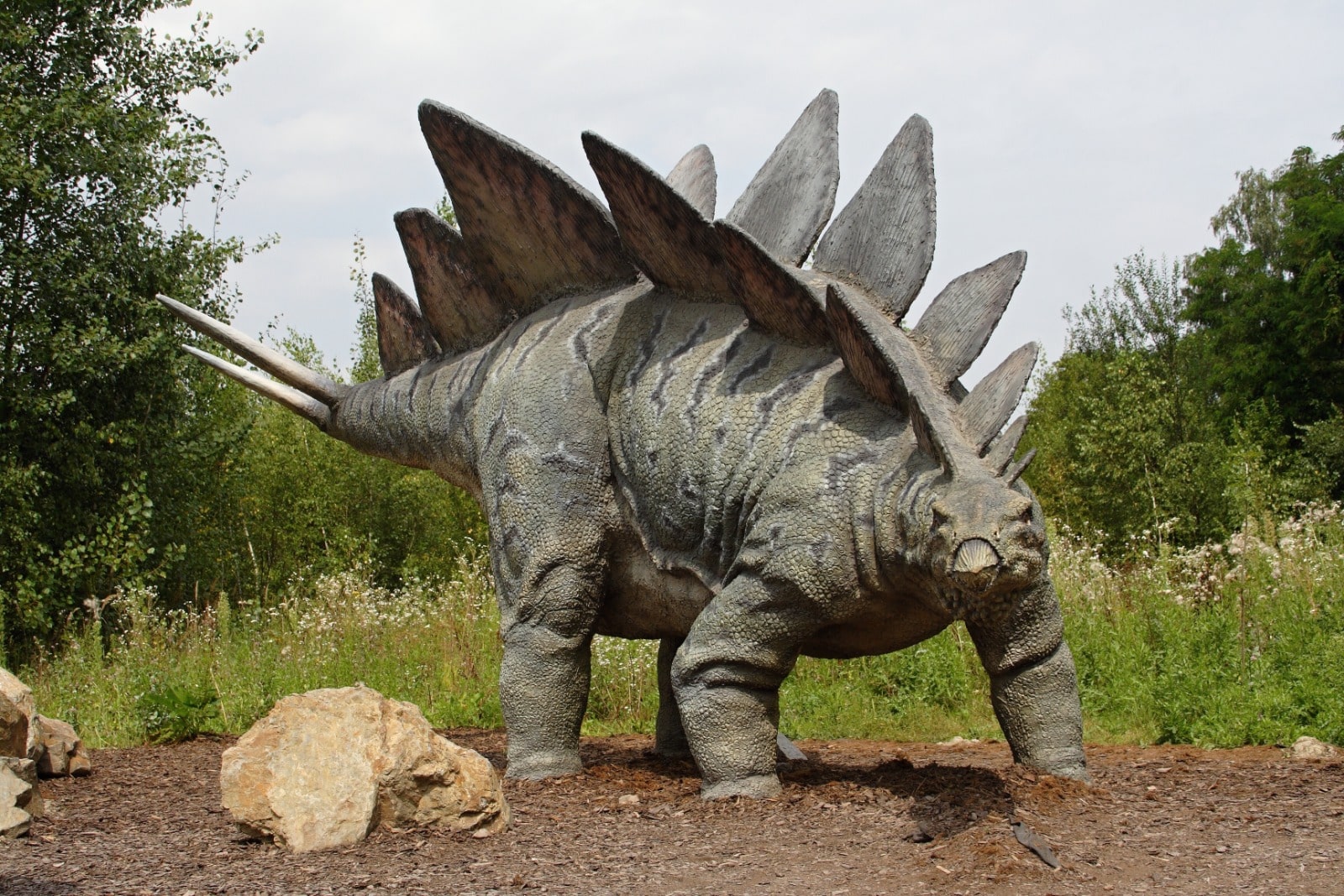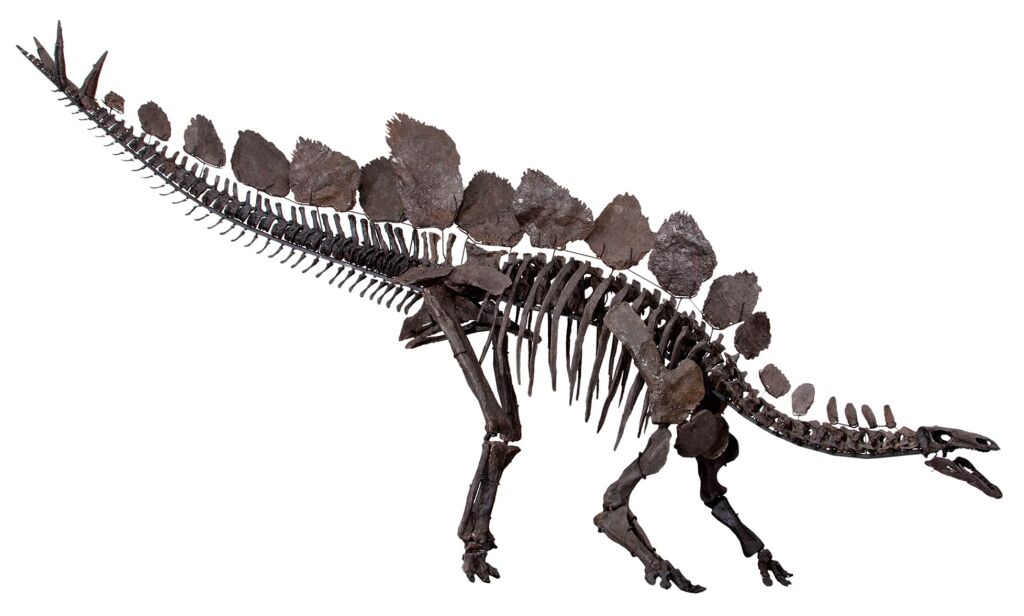
Stegosaurus (" roofed lizard " ) was a large, slow herbivore. It lived about 150.8 to 155.7 million years ago, during the late Jurassic period. Its fossils have been found primarily in western North America. It was about the size of a bus and carried two rows of 17 to 22 large bone plates on its neck, back and tail, making it appear even larger.
It had no front teeth on its beak. Its small teeth were flat, triangular, and somewhat serrated; thus, they were unsuitable for eating meat. Stegosaurus had cheeks, which suggests that it could hold food in its mouth while chewing.
| Profile | Stegosaurus |
|---|---|
| Prehistoric Era | Upper Jurassic , 150 to 155 million years ago. |
| Order | Ornithischia |
| Suborder | Thyreophora |
| Family | Stegosauria |
| Tribe | Stegosauridae |
| Genus | Stegosaurus |
| Species | Stegosaurus sulcatus, Stegosaurus stenops (Typ), Stegosaurus ungulatus |
| Height | 3 meters |
| Length | 9 meters |
| Weight | 3.5 tons |
| Territory | North America, Europe ( Portugal), China, India, South Africa |
The bony plates along the back were embedded in the animal's skin and not attached to its skeleton, which is why most fossil finds have the plates separated from the body.
After the first fossil of a Stegosaurus was described by O. C. Marsh, he suggested that the plates lay flat out from its back. However, when a specimen was discovered that had been covered with mud after its death, it could be seen that the plates were perpendicular to the body and protruded from the body alternately on either side of the spine.
The function of these plates is still discussed by experts. Possibly they served for protection and warning against predators, or for "communication" with conspecifics.
Since tiny grooves have been found on fossils of these plates, it is speculated that they contained blood vessels and thus served to regulate heat.
Stegosaurus had 4 to ten long spines at the end of its flexible tail. These pointed outward from the sides. Scientists began to informally call the spines "thagomizers"; a reference to pop culture in 1982, when a cartoon in The Far Side showed a group of cavemen naming the sharp spines after the late Thag Simmons and referring to them as thagomizers.
Experts assume that these spines were used for defense against predators. Its biggest predators were probably Allosaurus and Ceratosaurus.
Scientists have found puncture wounds from stegosaurus spines in allosaur fossils.
In addition, the tips of about 10 percent of the spines found are damaged.
Because of its distinctive body shape, Stegosaurus was often depicted on television and in motion pictures. For example, he appeared in films such as "King Kong" and in the second and third parts of the "Jurassic Park" films.
Stegosaurus has the smallest "body to brain" ratio of any dinosaur.
"Stegosaurus' brain was long thought to be the size of a walnut"
said armored dinosaur expert Kenneth Carpenter, director of the USU Eastern Prehistoric Museum in Utah.
"But actually, his brain was the size and shape of a crooked hot dog."

He had a short neck and a small head. This anatomy, coupled with its short front legs, enabled it to eat mainly ferns, mosses, cycads, fruits, conifers, horsetails, and even fallen fruit.
Perhaps Stegosaurus could even stand on its hind legs to reach lower hanging branches and fruits. However, this behavior is heavily debated by researchers.
According to a 1990 study published in the journal Paleobiology, Stegosaurus may have had a glycogen body (lumbar bulge). This is a structure found in birds that could play a role in energy storage.
Image sources: Jaime A. Headden (User:Qilong), CC BY 3.0 https://creativecommons.org/licenses/by/3.0, via Wikimedia Commons
Susannah Maidment et al. & Natural History Museum, London, CC BY 4.0 https://creativecommons.org/licenses/by/4.0, via Wikimedia Commons
Size comparison: KoprX, CC BY-SA 4.0 https://creativecommons.org/licenses/by-sa/4.0, via Wikimedia Commons
Stegosaurus_ungulatus: Perry Quan from Oakville, Canada, CC BY-SA 2.0 https://creativecommons.org/licenses/by-sa/2.0, via Wikimedia Commons
Skull: Daderot, CC0, via Wikimedia Commons